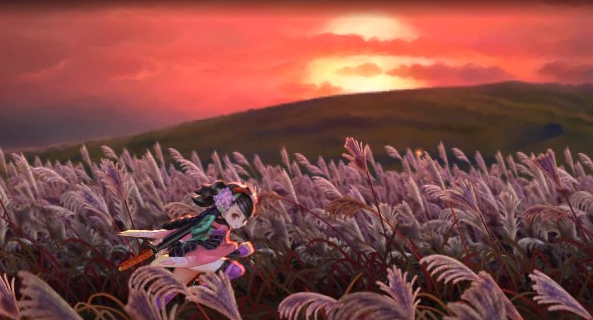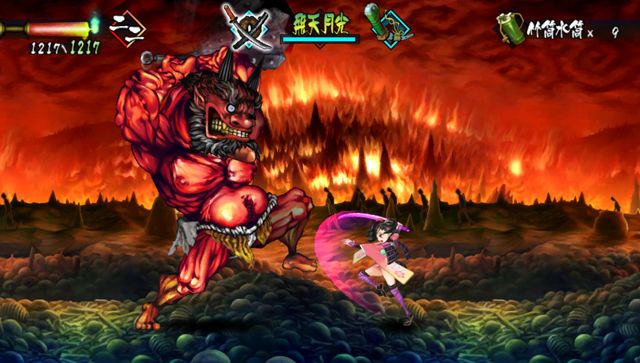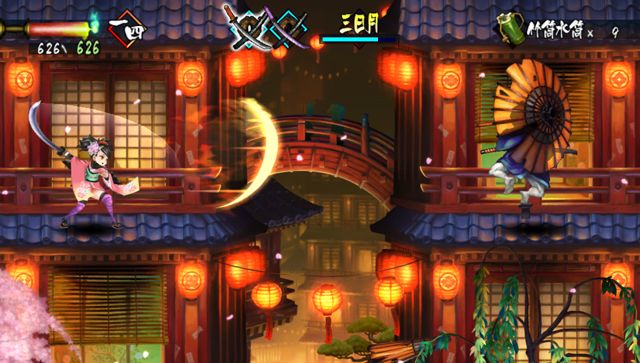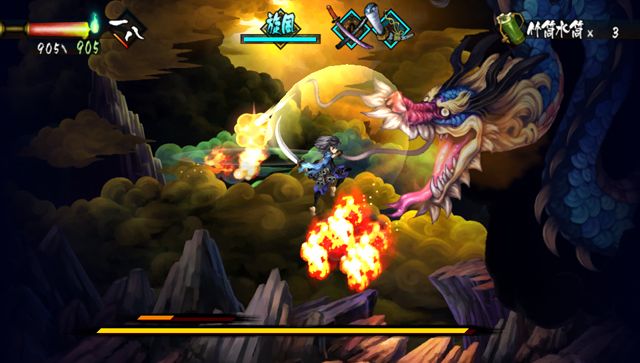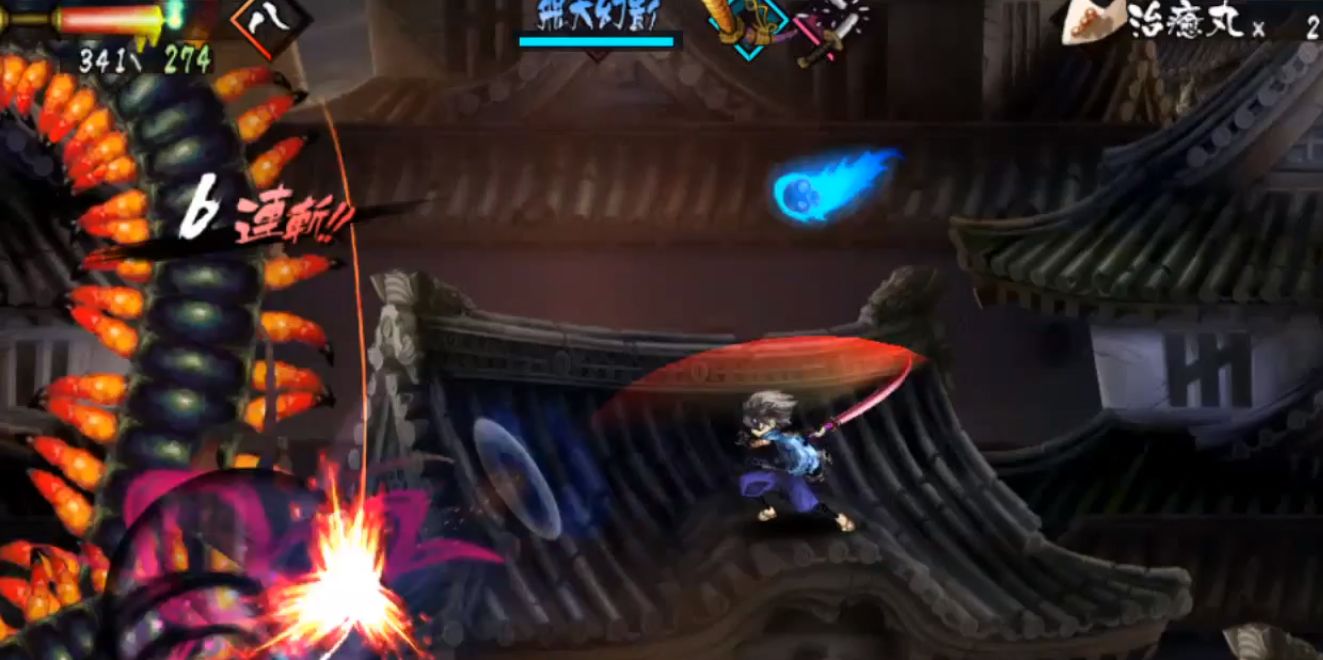Muramasa Rebirth is a remake of 2009’s celebrated Wii release Muramasa: The Demon Blade for the PlayStation Vita. The game – which most agree was already gorgeous to begin with – struts its stuff over to the Vita with enhanced visuals and a more accurate and thorough English translation. This beauty is definitely appealing to genre fans or to anyone who enjoyed or missed out on the original release, but just how sharp is The Demon Blade?
Muramasa Rebirth contains two separate campaigns. One stars the lovely princess Momohime while the other stars the bratty ninja Kisuke. Momohime’s story involves her being possessed by some wicked spirit and embarking on a violent quest to find a certain sword. Kisuke on the other hand is a runaway ninja with amnesia who also winds up hunting a certain sword. The stories in the game aren’t particularly rich or deep and none of the characters are profoundly interesting, but I never minded reading the dialogue.
By the end I was moderately interested in what would happen next, but I don’t see the narrative of this game being one of its stronger selling points.
Muramasa Rebirth has very interesting music. The first word that comes to mind when describing it is probably “authentic”. The woodwind instruments and strings make the game sound exactly as you would expect it to. The slower themes played while you’re traveling and the upbeat stuff that plays during skirmishes are all nice. On negative thing I noted about the music is that it was sometimes a bit boring or even hard to notice. This is certainly no major complaint, but the soundtrack didn’t get me as hype as I wanted it to.
The style of music is very similar to what appears in the Ninja Gaiden series, only I think I like Ninja Gaiden’s soundtracks a bit more.
The strongest draw of Muramasa Rebirth is without a doubt the game’s vivid art style. The game looks like a Japanese ukiyo-e painting come to life. It even features a hidden boss stage based on The Great Wave off Kanagawa, one of the most famous works of Japanese art. Everything from the stages, to the enemies, even down to the world map looks detailed and beautiful. This distinct visual style is the signature of Vanillaware’s impeccable designer George Kamitani.
Although the 2D graphical style is relatively simple, the art is very pretty. The quality of the music or storyline in this game is debatable, but the quality of the art is not. The visuals here have been enhanced from the 2009 Wii release. I never played that version of the game, but you can see the improvements clearly in comparison screenshots. The Vita version of the game has richer colors, deeper blacks and sharper lines and details. If the visual style convinced you to pick up the Wii version of the game, then you will certainly want to see this game running on the Vita.
At its core, Muramasa Rebirth is a simple 2D side-scrolling hack n’ slash game, but it has enough content to really get into. Both Kisuke and Momohime control identically. The only difference between them game-play wise is the selection of swords they have access to. Combat in the game is simple and intuitive, although not wonderfully deep. Every enemy in the game could be approached the same way and there was never any incentive to change up your tactics.
You could hack and slash away at the opposition right up until the very last enemy in the game, and that is definitely not good.
Still, collecting and experimenting with the different swords is pretty cool. Character progression in the game is straightforward – gaining levels increases your spirit and strength stats, but on their own the stats aren’t really important. They matter because you need to have met certain stat requirements to use better sword, and the better swords are what improve your character. Aside from having different attack stats, each sword also has a unique skill and effect. Some of the skills were very cool (the “wasp” variations are wonderful for the hulking bosses) and some of the effects (such as the one that randomly instantly kills enemies) are extremely useful.
One note is that I really would have liked the ability to customize the skills and effects. Some swords had great effects or skills that I really wanted to transfer over to the swords with better stats, but this is impossible. To make matters worse, some of the swords with the highest attack stats had absolutely useless skills. Even though collecting the swords and seeing what each one does is fun, I think I would have liked it better if the characters themselves learned the skills and could equip them along with the swords.
There are over one hundred swords in the game and collecting them all will be a time consuming process. You can equip three different swords at once, as well as one accessory. The accessories range from useless to very useful, but there aren’t quite so many of them. You can forge swords and a huge tree keeps track of which ones you have and don’t have. Forging swords requires souls which you gain from fights and spirit which you gain from eating.
Certain branches of the sword tree are blocked off until you defeat certain bosses and this effectively stops you from over-levelling.
Food in Muramasa Rebirth is important. You can eat at diners in the cities or, if you aren’t in the city, you can cook, although you’ll need recipe books and ingredients to cook. Aside from replenishing spirit, eating also gives you a lingering effect, such as increased attack or increased experience points from fights. Also, the dishes are fun to look at. I don’t know why, but there’s something weirdly interesting about seeing the steaming, detailed food disappear from the plate.
Once you clear a campaign you can warp around the world at will, but before then you’ll have to do lots (and lots) of running from place to place. This isn’t a big deal though, because the backgrounds are nice to look at. Portals to special fights are scattered throughout the world. These can be particularly challenging and you’re rewarded with a special accessory if clear them. I learned this after the second campaign, but you also receive a number of swords as rewards for clearing certain portals. So if you’re planning on getting all of the blades, you’ll have to worry about these.
A good amount of Muramasa Rebirth’s content comes in the form of replay value. After you clear both campaigns, the sword tree unifies and both Momohime and Kisuke can use each other’s blades. You also get two special swords which – when used to defeat the final bosses – unlock different endings for both of the characters. After seeing both of those you unlock a new sword which can be used to unlock yet a third ending. Aside from all of that, clearing all of the portals, unlocking all the swords and maybe unlocking all of the trophies (if that’s your thing) should take dozens of hours, providing a good value for the money.
While its combat could be deeper and it has some minor quirks, Muramasa Rebirth’s good looks and fast combat are strong merits. Your time with this game will primarily consist of shredding mobs of enemies with a variety of blades and skills, leveling up and forging swords, and ogling the game’s beautiful settings, enemies, characters and food. If you’ve already played the game on the Wii then you know what you’re getting, only it looks better than ever. I don’t see this game selling anyone on the Vita, though it may and it’s certainly a safe bet for action fans if you already own the console.

